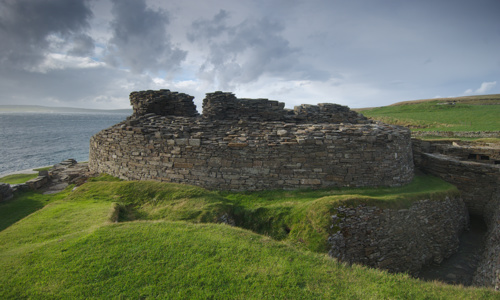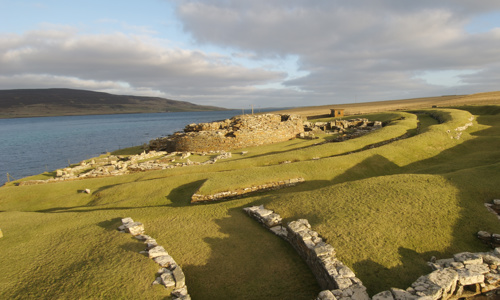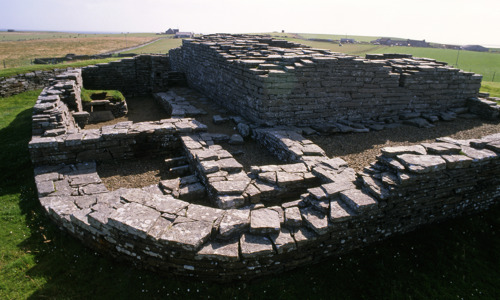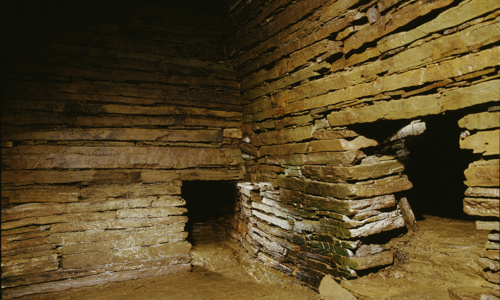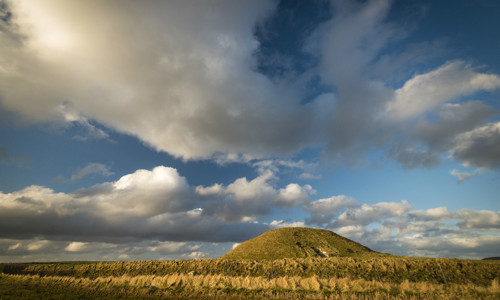History
A Neolithic landscape
There are 15 Neolithic chambered tombs on Rousay, five of which are in our care: Taversöe Tuick, Blackhammer, Knowe of Yarso and Midhowe.
The tombs were excavated in the 1930s, and all were found to contain human remains. Midhowe and Knowe of Yarso each contained more than 20 individuals.
In addition to human bones, finds at Midhowe included:
- pottery
- worked flint
- animal bones
Biggest and best
Midhowe Chambered Cairn is by far the largest of the tombs on Rousay. It’s 32.5m long and wonderfully presented, protected from the elements by a modern hangar. In shape and internal layout, the cairn is similar to some Neolithic houses, such as Knap of Howar on Papa Westray.
Upright slabs projecting from the walls inside the cairn divide the 23m passage into 12 stalls. They’re quite plain at the southern entrance end, but become more elaborate towards the far end, with low benches built into east sides. The last stall, at the far north end, is the most elaborate, paved and subdivided by low slabs.
No quiet place
Evidence from Midhowe gives us a window into Neolithic burial practice. It seems the dead were first buried in a crouched position on the shelves of the tomb, allowed to decompose to bones, and then rearranged.
When the tomb was excavated in the 1930s, nine corpses were found crouched in the stalls, facing towards the central chamber. Three skulls were placed upright on one of the benches, and the remains of at least 15 other individuals were scattered around the chamber. Presumably the nine corpses were the most recent burials, awaiting rearrangement.
These were not sealed sepulchres, where the dead could rest in peace, but were frequented by the living. The living certainly visited them for new internments, and possibly during important festivals.
At some date the tomb was deliberately filled with stones to prevent further use.


